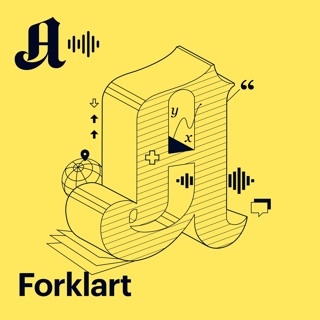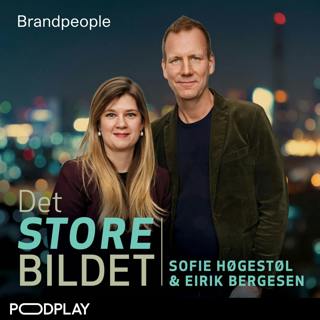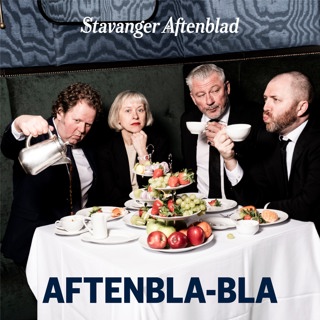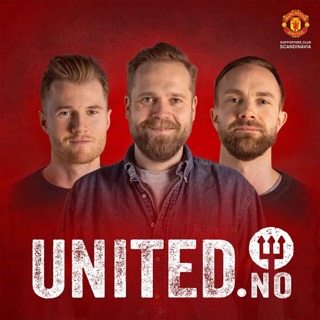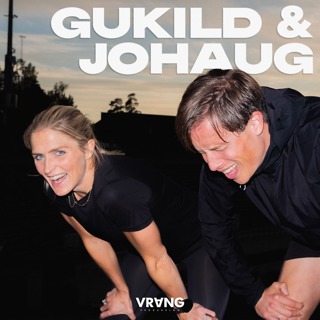
Fashion's Sustainable Shift: Eco-Friendly Materials, Collaborations, and Changing Consumer Expectations
In the past 48 hours, the global fashion industry has seen clear shifts toward sustainability, high-profile collaborations, and inventive product launches, all set against a backdrop of evolving consumer expectations and ongoing supply challenges. This week, market leaders accelerated their focus on eco-friendly materials. Circular denim, mushroom leather, and regenerative wool were highlighted in seasonal collections with brands like Stella McCartney and PANGAIA promoting new take-back and repair programs. Patagonia further expanded its resale and repair services, responding to consumer demand for durability and less waste.New fashion drops mirrored these priorities. Fall 2025’s top items featured barn jackets, oversized coats, and chunky knits made from repurposed or organic fibers. Wide-leg denims and plaid patterns led retail sales in the U S and U K, with dark indigo shades particularly popular. These sustainable collections responded directly to surging consumer awareness about resource use and greenwashing, as found in recent reports published this week.Major collaborations are making headlines and driving consumer excitement. Louis Vuitton relaunched its partnership with Takashi Murakami, combining nostalgia and modern craftsmanship. Balenciaga paired with Under Armour to merge luxury with athletic performance fabrics, launching tech-enhanced footwear and sweats that cater to a growing demand for sports-luxe. Victoria’s Secret debuted a designer line with Altuzarra using recycled lace, and H and M’s tie-up with Glenn Martens is expected to inject high-concept design into mass retail. These launches have generated a measurable spike in traffic to flagship shops and online stores since Monday according to early retail data.On the business side, layoffs in luxury talent acquisition were reported as brands streamline amid margin pressures. Wholesale events like Magic Nashville placed Western-inspired designs and contemporary young women’s wear at center stage, reflecting regional demand recovery in North America.Consumer behavior is shifting as shoppers prioritize price transparency, sustainable sourcing, and multi-functional clothing. Prices for eco-friendly premium items remained steady while fast fashion saw deeper markdowns during October Prime Day promotions, signaling tightening budget constraints even among trend-driven shoppers.Compared to fall 2024, today’s market is more fragmented but more innovative. Brands that invest in responsible sourcing, flexible supply chains, and creative partnerships are recovering fastest from recent global disruptions, shaping the path forward for the industry.For great deals today, check out https://amzn.to/44ci4hQThis content was created in partnership and with the help of Artificial Intelligence AI
9 Okt 3min

Fashion Industry Evolves: Mergers, Collabs, and Sustainability Strategies
In the past 48 hours, the global fashion industry has seen high-profile deals, new launches, and responses to emerging economic and consumer patterns. A major market move emerged as Prada received regulatory approval to acquire Versace, setting the stage for further consolidation among luxury giants. Meanwhile, Armani is reportedly in early talks with potential buyers, indicating that M&A activity continues to shape the upper end of the sector.Collaborations are driving much of the creative and commercial energy. Paul Smith and Barbour, two British heritage brands, have joined forces for a new collection, while major collaborations like Balenciaga and Under Armour target the high-tech sports-luxe market. H&M’s soon-to-launch line with Belgian designer Glenn Martens exemplifies attempts by high street retailers to blend avant-garde design into affordable offerings. Moncler has debuted a second collaboration with Rick Owens, focusing on boundary-pushing technical garments. Big US retailers are also participating: The new Gap x Sandy Liang line for women and kids launches October 10, bringing boutique energy to mass-market consumers.In circularity, Fashion for Good just announced a major partnership with adidas, Target, and Zalando to test bio-based materials in footwear soles. This 12-month project aims to move away from fossil-derived materials, which currently dominate shoe production and account for roughly 40 percent of a shoe’s weight. Industry leaders see this as essential to reducing environmental impacts and meeting evolving regulatory demands, especially in the EU.Paris Fashion Week, which just closed, set forth distinct trends that will cascade globally. The runways highlighted broad-shouldered jackets, sheer layers as power statements, and a return to lighter but dramatic formalwear. Designers are focusing on versatile, real-world pieces—reflecting a move from exclusivity to accessibility amid lingering economic uncertainty.Consumer behavior this week signals price sensitivity but sustained demand for prestige items and collaborations. Both Amazon’s Prime Day and major retailers have launched steep fashion discounts, a response to temper softening demand since late summer. This week’s market energy is shaped by digital-first launches, mergers, and new approaches to sustainability—contrasting a year ago, when recovery from pandemic disruptions dominated headlines. Now, consolidation, innovation, and consumer empowerment define the fashion industry’s state.For great deals today, check out https://amzn.to/44ci4hQThis content was created in partnership and with the help of Artificial Intelligence AI
8 Okt 2min

Fashion Industry Shifts: Exclusive Collegiate Deals, Streetwear Trends, and Evolving Supply Chains
The global fashion industry has been highly active in the past 48 hours, marked by significant deals, evolving consumer trends, and ongoing supply chain shifts. One of the most notable moves comes from Digital Brands Group, which on October 6, 2025, announced a bold expansion into the Name, Image, and Likeness (NIL) college apparel market, currently valued at 36.4 billion dollars and projected to reach 49 billion dollars by 2030. Digital Brands Group signed a three-year exclusive private label manufacturing deal with Yea Alabama, targeting direct-to-consumer sales through University of Alabama channels and aiming for faster, more agile product drops. New capsule collections are scheduled for release every month through the remainder of 2025. The company’s approach leverages first-party data for trend responsiveness and highlights new opportunities for female student athletes in collegiate licensing, a first for many in the NIL space. This marks a shift toward exclusive university partnerships and a more data-driven supply chain, reflecting a broader industry trend toward personalization and equity-aligned collaborations between brands and rightsholders. Digital Brands Group’s planned national expansion remains in talks and is expected to test the scalability of this model in 2026 and beyond. Concentration risk and supply chain agility will be watched indicators as the deal unfolds. Product launches and collaborations continue at a brisk pace. In just the past week, brands announced unique licensed collections: from Museum of Fine Arts, Boston with UNIQLO, to PUMA growing its partnership with Manchester City. Lifestyle licensing events such as Brand Licensing Europe launched today, with high-profile reveals from companies like Monster High, indicating brands' focus on youth and pop culture integration. Emerging competitors are tapping into streetwear, sports merchandising, and nostalgia-driven lines as differentiation strategies, with price points remaining steady but the emphasis steadily shifting to exclusivity and limited drops to drive demand.Comparatively, this level of activity builds on the momentum seen in summer 2025, but with clear movement toward more direct consumer relationships, heightened agility, and a growing emphasis on collegiate and cultural partnerships. Supply chain stability remains under review, but no major disruptions have been reported this week.For great deals today, check out https://amzn.to/44ci4hQThis content was created in partnership and with the help of Artificial Intelligence AI
7 Okt 2min

Fashion Industry Trends: Exclusive Collabs, Premiumization, and Agile Supply Chains
The global fashion industry has seen a wave of innovation and collaboration over the past 48 hours, marked by high-profile brand partnerships, rapid sell-outs, and fresh product drops. Standout collaborations like Ganni x New Balance, whose 1906L sneaker-loafer collection sold out immediately after its September 30 launch, reflect a demand for hybrid, easily styled products. Other headline partnerships include Microsoft x Crocs’ limited Windows XP edition, Adidas Originals x Wales Bonner’s Kareem Abdul-Jabbar tribute, and Valentino x Vans, bringing luxury into daily wear.Consumers are showing a clear preference for exclusive, nostalgia-driven releases, fast-fashion adaptability, and bold yet wearable luxury items. Recent launches have sold out in minutes, leading brands to lean into multi-platform teaser campaigns and influencer marketing to extend buzz. Market spectators note that sell-out speed has become a new barometer of success, altering how brands plan drops and restocks.Major players like Armani are reportedly courting investment interest from global beauty giants including L’Oréal, signaling potential shifts in industry power dynamics through minority stake sales. Meanwhile, Moncler is doubling down on creative collaborations, exemplified by its Moncler Genius x A$AP Rocky launch, which targets both streetwear and luxury buyers. On the supply front, American giants Wrangler and Filson have launched an outerwear line spanning accessible to heirloom price points, with jackets retailing from 180 to 750 US dollars, showing a concerted effort to broaden market reach amid inflation concerns.Supply chains are largely holding steady, although cost pressures exist as brands seek to offset rising material prices with high-demand exclusive products. Some Italian luxury labels are also returning to domestic manufacturing and rehiring displaced workers, as seen by a Bologna-based lingerie brand re-employing 200 staff after a 25 million euro acquisition.Compared to last month, the industry is trending further toward cross-category collaborations and premiumization, with price sensitivity influencing launches and marketing. Notably, Chicago’s Fashion Summit this week is drawing attention to digital innovation and regional talent, reflecting ongoing shifts in how brands engage with emerging markets.Fashion leaders are increasingly emphasizing limited-edition products, culturally resonant campaigns, and agile supply strategies to stay competitive in a market where consumer attention is fleeting and loyalty hinges on novelty and narrative.For great deals today, check out https://amzn.to/44ci4hQThis content was created in partnership and with the help of Artificial Intelligence AI
3 Okt 2min

Fashion's New Frontier: Navigating Shifts, Regulations, and Evolving Consumer Demands
In the past 48 hours, the global fashion industry has experienced dramatic shifts, reflecting a complex mix of recovery, new pressures, and evolving consumer preferences. The industry is still responding to the aftershocks of recent economic crises and facing a fragile recovery, especially in luxury markets. Brands like Hermès posted strong results this quarter, reporting a 9 percent revenue increase year over year, reaching 3.9 billion euros, driven by consistent demand for iconic items and a growing commitment to responsibly sourced materials. LVMH, another industry giant, saw a 7 to 9 percent drop in its fashion and leather goods revenue but has signaled resilience by reinvesting in product innovation and supply chain sustainability.A notable market disruption has come from regulatory changes. As of late August, the United States has eliminated the de minimis exemption on imports from all countries of origin, ending a policy that had allowed packages valued under 800 dollars to enter tariff-free. Fashion e-commerce platforms specializing in low-cost imports, such as Shein and Temu, are now facing tariffs ranging from 80 to 200 dollars per shipment. These measures have started to ripple through the market, prompting importers to rethink supply chains and, in some cases, relocate logistics hubs or raise prices. Supply chain uncertainties are further compounded by ongoing shifts in global trade policy and manufacturing sector contraction, with September’s ISM Manufacturing PMI at 49.1 percent, confirming another month of sector slowdown.Consumer behavior has shifted noticeably. There is heightened demand for sustainability, individualized experiences, and transparent practices. Online retail return rates remain high, costing UK retailers an estimated 27 billion pounds annually. Returns logistics represent a significant drag on profits, with processing costs per return ranging from 10 to 20 pounds, and many returned items from fast fashion never making it back to shelves before they lose value.Industry leaders are doubling down on both digital personalization and sustainability, with increased focus on circularity, resale, and climate initiatives. The race is now to blend tradition with innovation, navigating new regulatory realities while meeting changing customer demands. Compared to previous quarters, the balance between optimism and challenge has never been more pronounced, and the next moves from leading fashion houses and disruptors alike remain tightly watched.For great deals today, check out https://amzn.to/44ci4hQThis content was created in partnership and with the help of Artificial Intelligence AI
2 Okt 2min

Navigating Fashion's Transformation: Circularity, AI, and Strategic Collaborations in 2025
Based on the available information, here is a current state analysis of the fashion industry:The fashion industry is experiencing significant transformation as we move through late 2025, driven by regulatory pressures, supply chain adaptations, and strategic collaborations reshaping the competitive landscape.The most critical development is the impending EU ban on destroying unsold clothing and footwear, taking effect for large enterprises in July 2026. This regulation forces brands to abandon the traditional linear take-make-dispose model and implement circular strategies including donation, repair, and recycling for excess inventory. California's Responsible Textile Recovery Act reinforces this trend, holding producers accountable for their products' entire lifecycle. These Extended Producer Responsibility schemes fundamentally alter cost structures, as brands must now pay for garment disposal, encouraging design for durability and recyclability.Supply chain disruption remains a defining challenge. Asia-to-US shipping costs spiked 165 percent from December 2023 to February 2024, while tariffs have increased fivefold since 2015. US apparel imports from China dropped six percentage points between 2019 and 2023, accelerating diversification to Vietnam, India, Bangladesh, and nearshoring to Mexico, Turkey, and North Africa. Companies are prioritizing supply chain agility through multiple sourcing options rather than single-source dependencies.Artificial intelligence is transforming consumer engagement and operational efficiency. Research shows 82 percent of consumers want AI to reduce shopping research time, while 50 percent of fashion executives prioritize AI-driven discovery. Companies are focusing on hyper-personalization, with 84 percent of organizations prioritizing personalized customer touchpoints.Strategic collaborations are defining 2025's competitive landscape. Notable partnerships include Palace Skateboards with Maharishi, Pharrell Williams and Nigo with Louis Vuitton, Balenciaga with PUMA, and H&M with Glenn Martens. These collaborations bridge luxury and streetwear, democratizing high fashion for broader audiences.Gap's Fall/Winter 2025 campaign featuring Gwyneth Paltrow and Apple Martin exemplifies brands leveraging multigenerational marketing to connect with diverse consumer segments. The 38-piece capsule blends architectural elements with cultural references, targeting both established and emerging demographics.Current conditions reflect an industry balancing regulatory compliance, operational resilience, and creative innovation while adapting to evolving consumer expectations and geopolitical pressures.For great deals today, check out https://amzn.to/44ci4hQThis content was created in partnership and with the help of Artificial Intelligence AI
1 Okt 3min

"Sportswear Surge and Sustainability Shaping Fashion's Future"
The fashion industry over the past 48 hours has displayed both volatility and resilience. One of the most notable trends is the explosive growth in the sportswear e-commerce sector, which is expected to reach 250 billion dollars by 2033 at a projected annual growth rate of 8.5 percent. This surge is being driven by ongoing digital innovation, the popularity of athleisure, and rapidly shifting consumer expectations around sustainability and personalization. Consumers now gravitate towards eco-friendly and ethically produced collections, with major brands introducing apparel using recycled or organic materials. AI technologies are personalizing shopping experiences, while augmented reality is transforming the online fitting process, increasing customer engagement and retention.In terms of deals and partnerships, Castore announced a five-year agreement with Apparel Brands to develop and distribute socks and underwear across the UK and Europe, expanding its reach into performance and lifestyle clothing. Earlier this year, Castore’s acquisition of Belstaff reflected an appetite for growth and strategic alliances that transcend traditional retail segments.Sustainability and regulatory action are dominating executive agendas. The Global Fashion Agenda’s Fashion CEO Agenda released this week bluntly states the industry cannot afford incremental change and must urgently align with the Paris Agreement. This comes as market leaders like LVMH, Kering, Ralph Lauren, and H&M commit to circular strategies such as resale and textile recycling. The report highlights that failing to act on sustainability now poses more financial and reputational risk than investing in responsible practices.On the consumer side, behavior continues to shift. Recent data from Parity shows that more than 25 percent of women’s soccer fans made purchases based on brand sponsorships, reflecting women’s growing influence. This trend is especially relevant as brands like Aligne successfully launch co-branded collections with female soccer stars, generating strong engagement and positive sentiment.Supply chain disruptions persist, intensified by ongoing geopolitical and trade uncertainty. Industry leaders at this week’s Sourcing Journal Summit in New York emphasized that adaptability is critical, as formerly stable cost metrics are now unpredictable and the global labor landscape is becoming more precarious. With policy, pricing, and technology all in flux, brands that rapidly adapt their digital, sustainable, and direct-to-consumer strategies are better positioned to thrive, while those resistant to change face rising pressures.For great deals today, check out https://amzn.to/44ci4hQThis content was created in partnership and with the help of Artificial Intelligence AI
26 Sep 2min

Fashion's Evolving Landscape: Navigating Economic Headwinds and Shifting Consumer Demands
The global fashion industry in the past 48 hours is reflecting mounting pressure from economic headwinds, shifting consumer behavior, and a flurry of new collaborations aimed at reinvigorating demand. After a sluggish 2024, the market outlook for 2025 remains cautious, with revenue growth predicted to hold in the low single digits. Last week, a McKinsey executive survey reported only 20 percent of fashion leaders expect any improvement in consumer sentiment this year, while 39 percent foresee further deterioration. Luxury, which drove much of the sector’s value in recent years, is facing stiffer competition as nonluxury brands are now set to generate the bulk of economic profit for the first time since 2010, excluding the pandemic years. This shift is driven by increasingly price-sensitive shoppers grappling with the aftermath of prolonged inflation and the rapid rise of affordable “dupe” products.Brands are responding by pivoting their growth strategies geographically and through collaboration. As China contends with continued macroeconomic challenges and slower spending, global brands are intensifying their investments in markets like Japan, Korea, and India, and capitalizing on falling inflation and increased tourism in Europe. In the US, high-net-worth shoppers remain a bright spot, but overall pessimism has grown since last year.To capture customer excitement, industry leaders are stacking up high-profile partnerships and launches. Louis Vuitton’s renewed collaboration with Japanese artist Takashi Murakami, and Balenciaga’s tie-up with Under Armour, both spearheaded within the past week, underline a blending of pop culture nostalgia, sport functionality, and luxury. Meanwhile, value and accessibility remain themes with J.Crew and Araks debuting designer capsules under 200 dollars. Victoria’s Secret and Altuzarra are using limited-edition drops and QR-enabled ethical tags to reignite interest and demonstrate progress on sustainability.Emerging competitors and disruptors are leveraging these launches, and the narrative focus of new collections shows the pivot from pure luxury to accessible luxury and merchandise with distinct cultural or ethical appeal. While no major regulatory shocks affected the industry this week, pressure remains on brands to innovate supply chains and respond to consumer demand for affordability and meaning. Compared with reporting earlier this year, the present moment marks a decisive turn away from luxury’s dominance, and toward a wider embrace of new markets and value-driven consumption, as industry leaders pursue growth amidst economic and strategic complexity[2][3].For great deals today, check out https://amzn.to/44ci4hQThis content was created in partnership and with the help of Artificial Intelligence AI
25 Sep 2min




